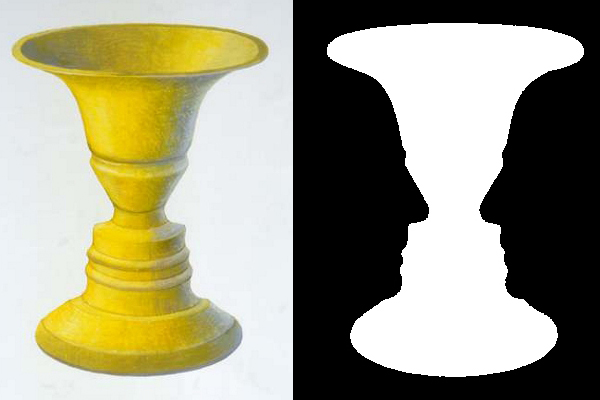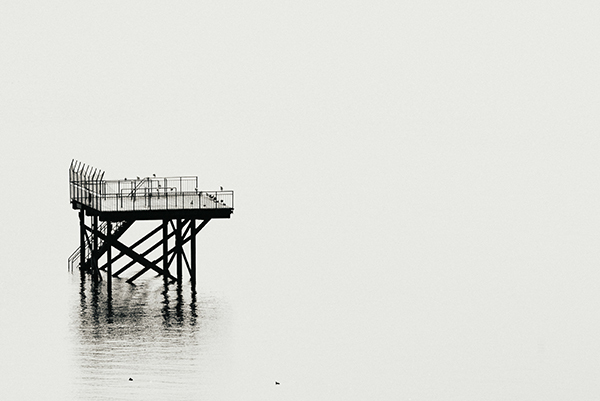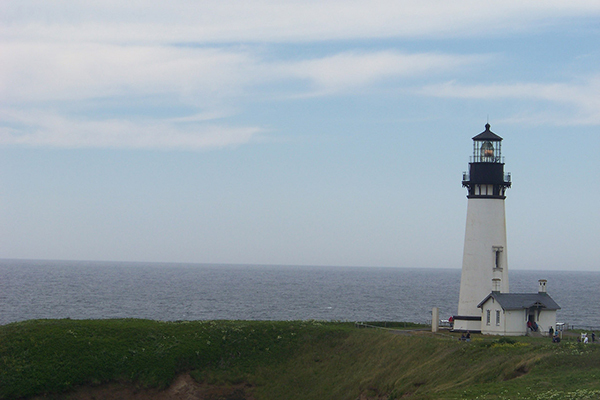Just like the use of negative space in design, the artful use of negative space in photography is a valuable composition technique. In compositions where plain, empty, or white space surrounds the subject (your positive space), negative space is used to give breathing room for the real star to shine. Like leading lines, negative space subtly (or not so subtly) helps draw attention to the subject of your photo.
Find out more about how to use space in photography and learn the difference between positive and negative space below.
What Are Positive and Negative Space?

Negative space is about placing emphasis on the subject of your image by deliberately including areas of less visual interest to the audience. The viewer’s eyes are drawn to the part or parts of the image that are more eye-catching. So, the space is negative in the sense that its purpose is to repel the viewer.
But that doesn’t mean it’s a net loss for your image! By not overloading the entire frame with active or vibrant content, you can isolate or highlight the subject of your photo, directing the viewer’s eye where you want it. The area of intended emphasis, and where all the visual “action” is, is called positive space.
Examples of Negative Space

A classic example of negative space in art is Rubin’s Vase. The famous optical illusion uses black and white space to depict an image of a vase, with the white space in the center of the image forming the shape of the vase. However, if you focus your attention on the black space, it instead appears to depict the faces of two men in profile staring at each other. This begs the question: is the background black or white?
Rubin’s Vase is also an example of figure-ground perception, which refers to our tendency to simplify an image by separating a figure, shape or object from a perceived background. The artwork exposes the flaw in how we process visuals, as you are able to see the vase and the two faces in the artwork, yet we are unable to perceive them simultaneously.
Don’t expect to stumble upon any mind-bending optical illusions just because you’re employing negative space in your shoot, though. That’s not the point. You also probably won’t win any awards for pulling a John Cage, and shooting a photo of a plain white wall and calling it a day.
Any time you include a sizable area of deemphasis, often an ordinary or blurred background, balanced by a clear subject of extra emphasis, you’re using negative space. Imagine:
- A seagull floating across a clear, blue sky
- The blur of a fast-moving train behind an exiting passenger
- A young man dancing in front of a large, imposing building
- A plate of chocolate chip cookies alone on a white table
How to Use Negative Space in Photography

There are different ways and reasons to use negative space. Perfecting the use of positive and negative space is all about balance. You’ll want to make sure to pay attention to various aspects of your shot when employing this tool. Here are some things to think about as you proceed:
Consider the Mood
Do you want to add heaviness, wistfulness, or romance to your shot? If you want a certain emotional tone or mood, ask yourself if your use of space is complementing or hampering that? Make sure you know the reason you are using negative space, and consider how it will contribute to the emotional story you want to tell.
Make Sure it’s Truly Negative
This one may seem obvious, but it must be said. While negative space doesn’t need to be a boring white backdrop, be careful that your negative space isn’t so busy that it takes attention away from the subject. That checkered tablecloth might be pulling a little too much attention from the plate of lasagna sitting on top of it.
Don’t Forget About the Subject
Focusing on space means being careful to capture both negative and positive space just right. Adjust your composition as necessary to achieve the perfect balance between the subject and your negative space. Obviously, if your goal is to emphasize the subject, make sure your subject is placed exactly where you want it. Err on the side of having too much negative space, and don’t be ashamed to crop your shot after the fact if it doesn’t have the right weight balance.
Concluding Thoughts

Using negative space in photography might sound easier than it actually is. Don’t expect that you’ll be an expert right off the bat. However, practicing this skill will teach you how to consider all the elements of the frame and their purpose, as opposed to a narrow focus on the subject.
Once you master positive and negative space, you’ll be one step closer to complete creative control over your imagery.







